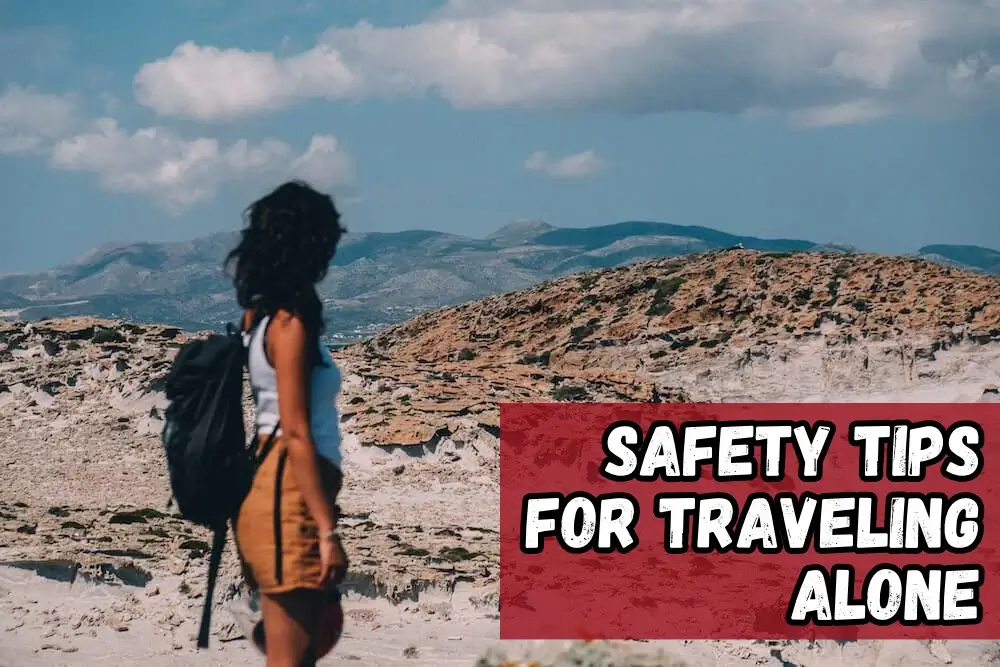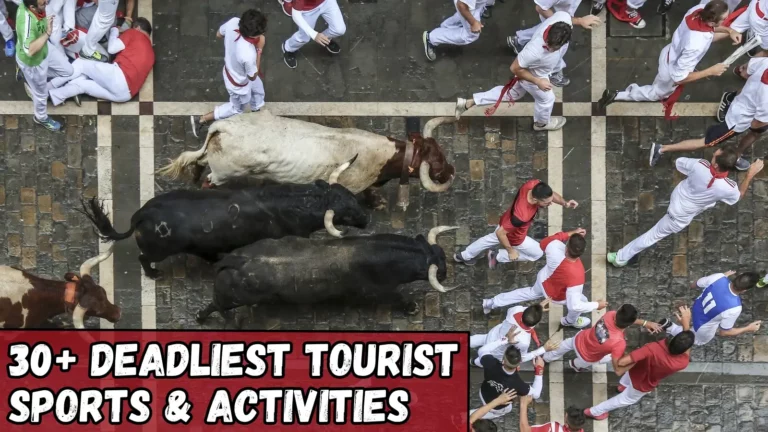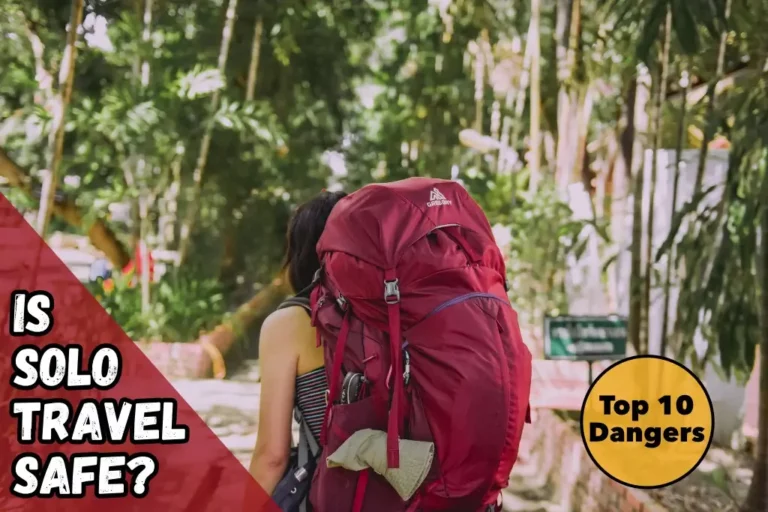35 Solo Travel Safety Tips You Need To Know
One of the main things that first-time solo travellers want to know is how to stay safe while travelling alone. To help you keep yourself from danger, I’ve listed the 35 solo travel safety tips that every tourist needs to be aware of.
These are tips that I have learned (the hard way) throughout my years of travelling alone. Within this list of solo travel safety tips, you will find advice on:
- Planning solo travel
- Packing and gear
- Transportation
- Accommodation
- Foreign laws and culture
- Relationships
- Technology
- Finances
- Health
- Street smarts
Please note that Nomadic Yak does not take any responsibility for your safety when travelling alone. Your safety is your own responsibility and you must take caution.
Keep yourself free from harm with the solo travel safety advice on Nomadic Yak!
How to Stay Safe While Travelling Alone: 35 Solo Travel Safety Tips
Planning and preparing for solo travel safety
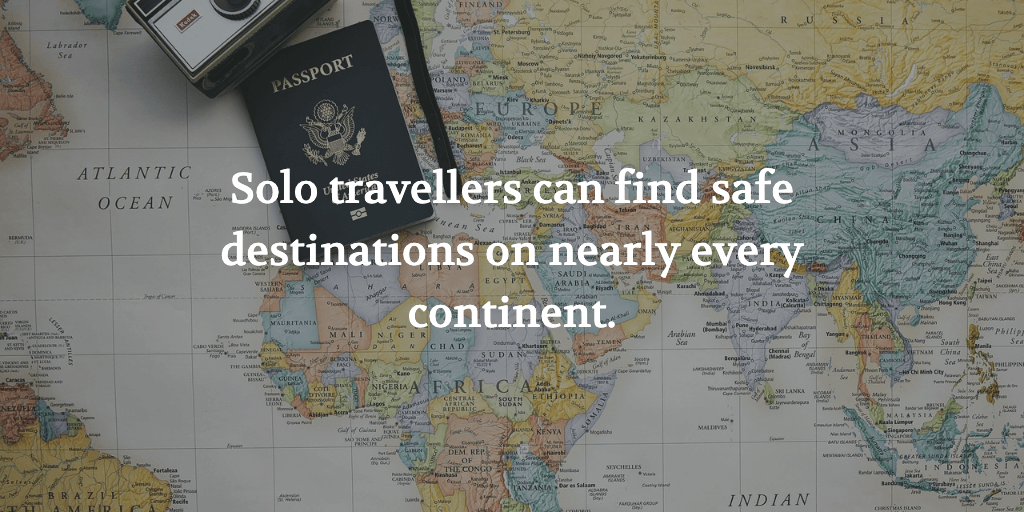
- Choose a safe destination
If it is your first time travelling alone, you’re probably asking, is solo travel safe? The answer largely depends on your destination. Don’t throw yourself into the deep end by visiting dangerous or difficult destinations.
Some of the safest countries to solo travel to in 2022 include:
- Pacific: Australia and New Zealand
- Asia: Singapore, Japan and South Korea
- North America: Canada
- South America: Uruguay, Chile and Argentina
- Europe: Iceland, Denmark, Spain, Portugal and Austria.
See my full list of the 193 best places to solo travel – I’ve scientifically ranked every country in the world and given each a safety rating.
- Check your country’s travel advisory
Some governments offer online travel advice and warnings about international destinations.
The most popular government advisories include Australian Smartraveller, US Travel Advisory, GOV.UK and Government of Canada.
On some of these government websites, you can subscribe to email updates if the situation changes at your destination.
Some governments also allow you to register your travel plans with the nearest embassy or consulate. They may be able to assist you in an emergency.
- Avoid these dangerous destinations
Some destinations are safer than others. Make sure that your chosen destination:
- Is free from threats of terrorism, political upheaval and internal conflict.
- Is accepting of your gender and sexual orientation (particularly important for female and LGBTQ solo travellers).
- Is free from widespread disease or pandemic (get vaccinations if required).
- Is free from widespread corruption.
- Hosts a local embassy or consulate for your home country.
- Provides emergency services such as police and ambulance.
- Provides access to quality doctors, hospitals and healthcare.
- Provides access to the internet and telecommunications.
- Is popular amongst tourists and offers reputable accommodation.
- Is covered by travel insurance.
- Has a relatively low crime rate.
- Has a legal system that you understand.
- Scan and photocopy important documents
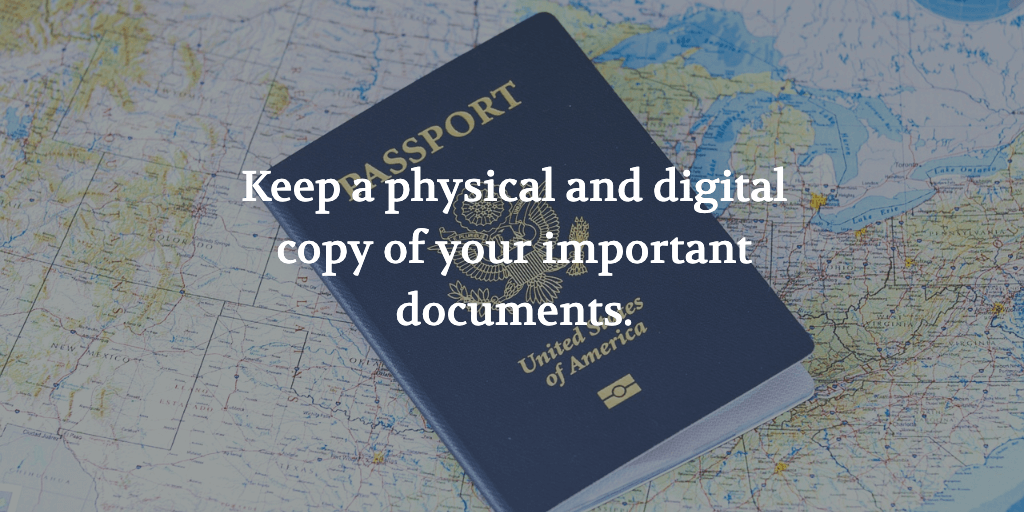
Scan and photocopy important documents before leaving on your solo travel adventure, including your:
- Passport
- Visa
- Vaccination documents
- Driving licence
- Travel insurance.
Keep a photocopy of these documents in your bag, as a backup in case you lose the originals.
Also, store electronic versions of these documents on your phone and email (or cloud storage). Send a copy to a family member so that they can access it in an emergency.
- Leave unnecessary documents and items at home
Whilst it’s important to carry the documents above, there are other documents that you don’t need to carry with you while travelling alone. These can be a liability if lost or stolen.
Empty your wallet or purse of unnecessary documents or items such as:
- Healthcare cards
- Rewards cards
- Gift cards
- Business cards
- Unnecessary insurance cards
- Birth certificates
- Spare keys (give to family or friends at home)
- Unusable currency.
- Buy a decent level of travel insurance
One of the most crucial solo travel safety tips – buy travel insurance before you leave. Most insurers will not let you buy insurance once you’ve left your home county.
Some countries require you to have travel insurance before you can enter the country.
Travel insurance can help you cover the cost of:
- Overseas healthcare and medical assistance
- Lost or stolen baggage or valuables
- Cancellations and delays during your trip.
Packing and solo travel safety gear
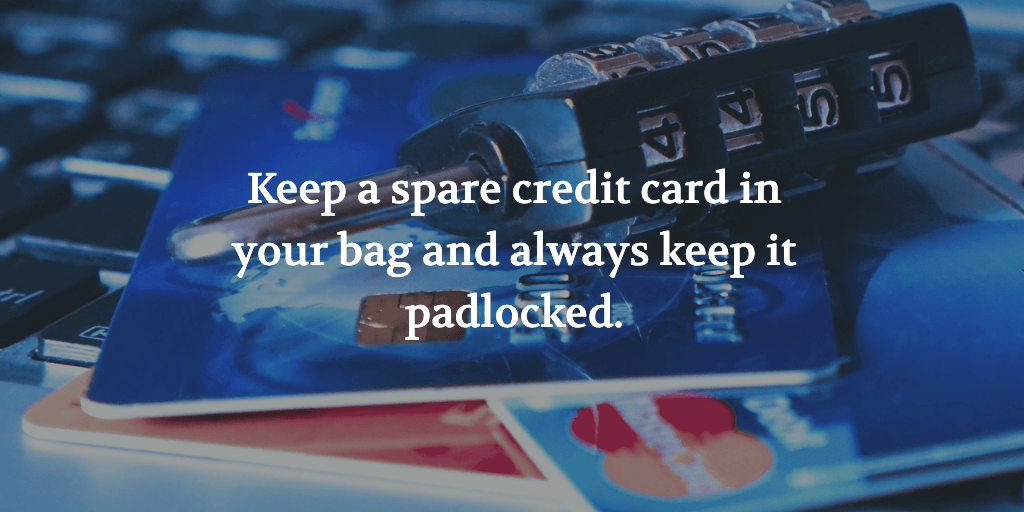
- Lock up your valuables
Buy a few numeric padlocks so that you can lock the zips on your day bag and travel bag.
If your hostel has lockers, use another numeric lock to secure your items when leaving them behind for the day.
I’ve Never Had Anything Stolen From My Bags
2x Puroma Numeric Padlocks
- Stop thieves from getting into your bags or hostel locker.
- Don’t worry about carrying and losing keys.
- Just remember a 4-digit code of your choosing.
- Include these safety items on your packing list
There are some essential safety items that you should include on your solo travel packing list:
- Bum bag or fanny pack
- Travel wallet or sticky phone wallet
- Photocopies of your important documents
- Spare credit or debit card
- Doorstop (for securing the door to your hotel room)
- Navigation apps
- VPN
- Covid vaccination records (if required)
- Covid test results (if required)
- Face masks
- Hand sanitiser
- Bandaids
- Prescription medications.
Make sure you don’t leave behind vital luggage. See my solo travel packing list for females and solo travel packing list for males.
- Make your luggage distinctive
The first thing you should attach to your luggage or backpack is a name and address tag. It’s also helpful to attach colourful ribbons or patches that make your bag stand out from everyone elses.
This way, you can find your bag more easily at airports and have it quickly returned if it is lost in transit. It’s also easier to keep an eye on your bag and protect it from theft.
Transportation

- Travel during the day
It’s safest to solo travel during the day when you can see your surroundings and are more aware of the dangers around you.
Plan transport so that you arrive at your destination during the day. It can be dangerous trying to find accommodation or local transport (e.g. a bus, train or taxi) in the dark of night when visiting a foreign place for the first time.
- Pre-book transport and accommodation
It is best to have your transport pre-booked (e.g. a shuttle bus) for when you arrive at the airport on the first day of your trip. You do not want to be left stranded at the airport, trying to find public transport or negotiate taxi prices with local drivers.
If you will be arriving after business hours, tell the hotel or hostel that you will be checking in late. The staff may also be able to help you arrange transport from the airport.
Accommodation
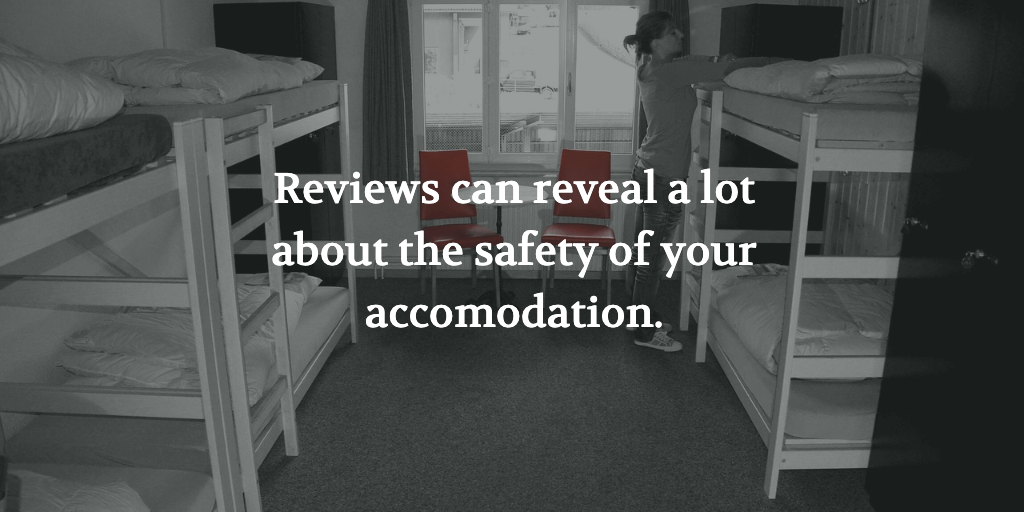
- Read reviews before booking accommodation
This is one of those solo travel safety tips that are less obvious – online accommodation reviews can offer great insight into how safe fellow travellers felt during their stay.
When using booking websites, filter the reviews for comments about safety and security.
Try to book accommodation that:
- Is located in a popular and safe part of town (close to attractions, transport and eateries).
- Has trustworthy and friendly staff.
- Has locks on the doors and windows.
- Offer lockers to secure your bags and possessions.
- Isn’t suspiciously cheap compared to other options.
- Women can ask for females-only dorms
If you are a female solo traveller and are concerned about sharing accommodation with men, don’t hesitate to ask to stay in a female-only dorm.
You can use popular booking websites to ensure that the hostel offers a female-only dorm room.
Foreign laws and culture
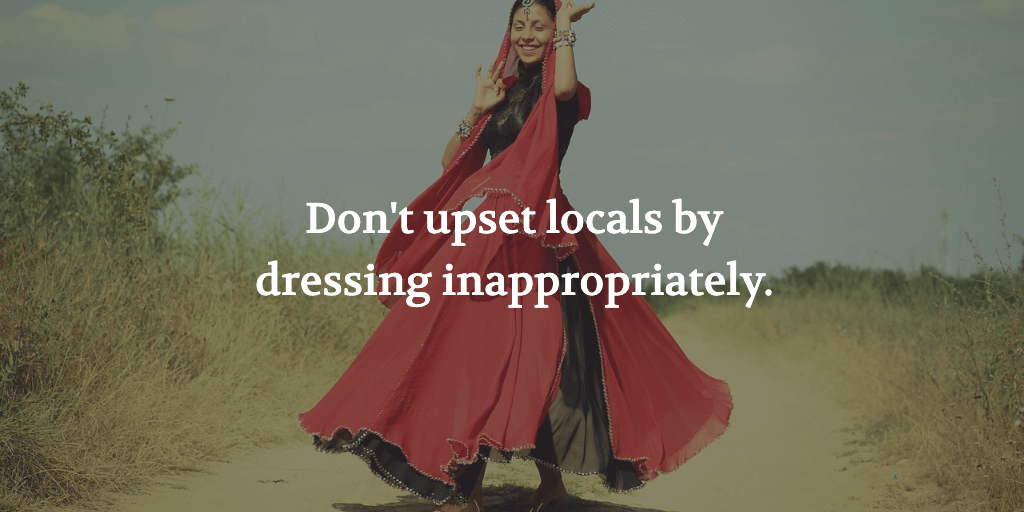
- Read up on the local laws
Not all legal systems are the same. Some solo travel destinations have very strict laws that you may not be familiar with. Breaking these laws could see you arrested, trialled and criminally punished.
For example, drinking alcohol is illegal in some Islamic countries.
Make sure that you have read and understand the laws of the destination that you are visiting.
- Respect the cultural dress code
You don’t want to stand out from the crowd too much. Drawing attention to yourself can make you a target for scammers, thieves and other dangers.
The best way to blend in with the locals is to dress to their cultural standards and expectations. For example, female solo travellers should cover their shoulders and legs when visiting Islamic countries.
- Learn the basics of the local language
Learning to speak a little bit of the local language will make your solo travel adventure easier, safer and more enjoyable.
At the very least, you should be able to greet people, say ‘please’ and ‘thank you’, order food and drink and ask about transport.
You can learn the basics of a language in as little as 1-2 hours using popular apps.
Relationships

- Only share your itinerary with people you trust
Before leaving for your solo travel adventure, share your itinerary with your family and friends.
It’s beneficial for them to have a copy of your plans so that they know where you are if you need assistance. If your plans change, make sure to keep your family updated as you move around.
However, don’t share your solo travel plans with strangers. You don’t want strange or dangerous people to know when and where you will be travelling to, as you could make yourself a target.
If you’re worried about making friends when travelling alone, see my guide on how to travel alone without being lonely.
Technology
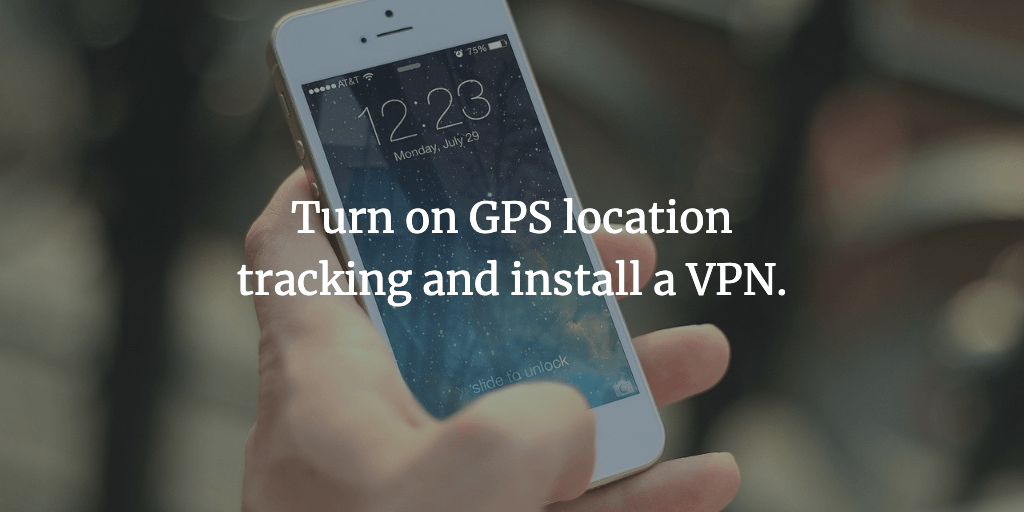
- Buy a local sim card with internet data
One of the first things you should do upon arriving at your destination is to buy a local sim card with plenty of internet data.
This way, you can stay connected with family and friends, book accommodation and transport, use online maps and make phone calls in an emergency.
In some countries, you can preorder a sim card online and pick it up when you arrive at the airport. Otherwise, you can simply buy it when you arrive at the airport, but this may be slightly more expensive than buying it elsewhere.
- Set up ‘Find My Phone’
Most modern smartphones come with a ‘find my device’ feature. If your phone is lost or stolen while you are travelling alone, this app will help you locate, lock or erase the data on it.
Set this feature up on your phone before leaving for your solo adventure. Apple iPhone users can use Find My iPhone, whilst Google users can use Find My Device.
- Share your GPS location with family and friends
You can also use your smartphone to share your GPS location with family and friends. This is one of the most important solo travel safety tips as it could help your loved ones to locate you in an emergency.
Apple iPhone users can share their location with family and friends via Find My iPhone. Similarly, Android users can share their location via Google Location.
- Use apps for navigation
Before leaving for your destination, download a navigation app such as Google Maps (for online maps) or maps.me (for offline maps) on your smartphone. On these apps, you can save points of interest such as your accommodation and attractions that you want to visit.
This way, you won’t have to spend a lot of time looking down at your phone when navigating your destination. You can even put in an earphone and turn on notifications so that the app gives you verbal guidance.
- Use a VPN when accessing public Wi-Fi
You will often have to rely on public Wi-Fi in hotels, cafes and airports when travelling alone.
Public networks are insecure and can allow hackers to steal data such as:
- Your logins
- Your bank details
- Your photos and videos
- Your address.
Subscribe to a VPN service and set it up on your devices before leaving for your solo travel adventure. Whenever you connect to a public Wi-Fi network, be sure to turn the VPN on.
Finances
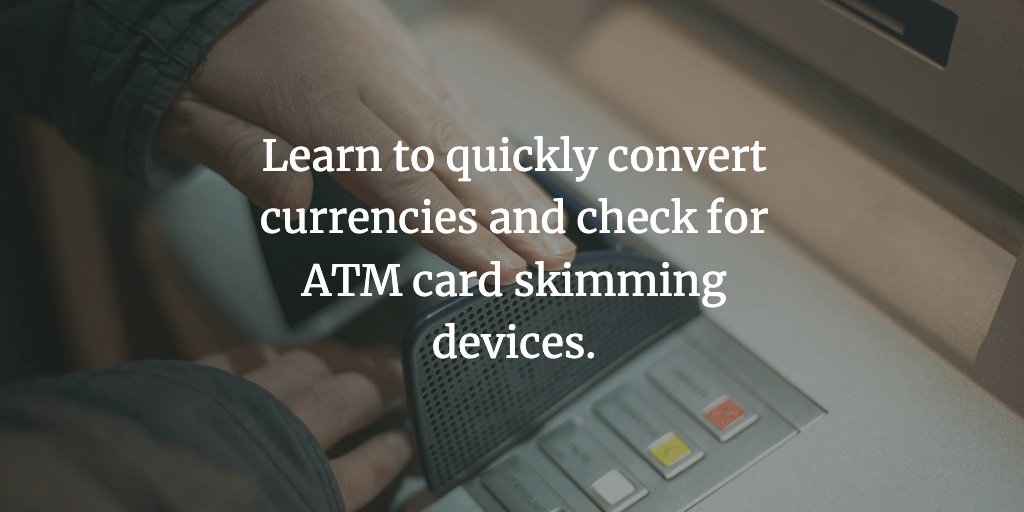
- Get a grasp on the local currency
Make sure that you know what 1 unit of your own currency is roughly worth in the local currency. This way, you can use quick multiplication and division when checking the price of local goods and services. For example:
- $1 USD = $1.50 AUD
- $10 USD = $15 AUD
- $100 USD = $150 AUD
Being able to quickly convert currencies in your head will help you avoid being ripped off by merchants, taxi drivers, ticket sellers and scam artists.
Otherwise, you can pull out your phone and use an online currency converter or an app.
- Take a spare debit or credit card
Ask your bank for a second debit or credit card and leave it hidden somewhere in your main bag (which should be locked up at all times).
If your original card gets lost or stolen whilst you are travelling, you can quickly cancel it and rely on the backup card.
Some banks offer travel debit cards, which can help you save money on foreign transaction fees, overseas ATM withdrawal fees and foreign exchange markups.
- Check ATMs for card-skimming devices
Thieves manipulate ATMs so that they can steal your card details when you withdraw cash. One of my solo travel safety tips is to try and only use bank ATMs rather than street ATMs, as these are generally more secure.
When you do use an ATM, check that it hasn’t been tampered with. Don’t insert your card if the card reader looks loose or crooked or if part of the machine is a different colour.
Check whether the numbers on the keypad seem thick or hard to press, as this may indicate a false keypad. And cover the keypad with your other hand when entering your PIN.
- Set up fraud alerts on your bank account
Most banks have a security system that can detect and alert you of suspicious or fraudulent activity on your account. This helps in preventing thieves or scammers from stealing your money whilst solo travelling.
Adjust the settings so that you receive an alert if a set amount of money is spent or a suspicious number of transactions occur in a short period.
However, be aware that fraud alerts are not always reliable. You should also log in to your account daily to ensure that no fraudulent transactions have taken place.
- Don’t carry large amounts of cash
It is best to only withdraw small amounts of money from ATMs rather than large amounts. This means that you are less of a target should you open your wallet in public. It also means you will lose less money if you are robbed.
Ideally, you should only have enough money to last you 2-3 days while travelling alone. However, this may mean that you have to visit ATMs more frequently, which is why it is best to get a travel card with no international withdrawal fees.
Also, keep some emergency cash hidden in your day pack and your main bag (i.e. suitcase or backpack).
Health

- Get the necessary vaccinations
Before you leave on your solo travel adventure, make sure that you have visited your doctor and received the necessary vaccinations.
Vaccinations can help protect you from infections that are common in some regions, such as hepatitis, cholera, typhoid, measles and rabies.
To check which vaccinations are necessary for your destination, you can use a website such as Travel Health Pro or the Centres for Disease Control and Prevention.
Street smarts and other solo travel safety tips

- Avoid partying alone
Solo travellers should avoid going out at night alone, particularly when partying and drinking. If you do go out, take it easy on the alcohol. You don’t want to make yourself vulnerable to assault or theft.
If you’ve made a few trustworthy friends whilst travelling, ask them to accompany you on nights out.
- Research local scams
As you solo travel to different destinations around the world, you will become aware of different tourist scams taking place.
Get a headstart on scam artists and research some of the more common scams before you arrive. Then avoid them by using common sense and these solo travel safety tips.
Common tourist scams that you need to be aware of include:
- Overcharging: Merchants, taxi drivers and local tourist agencies overcharge you for products and services.
- Police bribes: Corrupt police officers allege that you have committed a crime and ask for a bribe.
- Taxi scams: Unlicensed or unmetered taxi drivers offer overpriced flat-rate fees that are higher than metered fares.
- Vehicle hire scams: Car, motorcycle and jet ski hire companies demand money for alleged damage.
- Wrong change scams: Merchants, taxi drivers and local tourist agencies return the wrong change when you pay in cash.
- Credit card skimming: When someone illegally copies your credit card information.
- Pickpocketing: When thieves steal your possessions from your pocket, often after creating a diversion.
- Visa scams: Being sold visas that are unnecessary, illegitimate or overpriced.
- Fake ticket scams: Being sold fake tickets or accommodation online or in person.
- ‘Carry my bag’ scams: When someone offers you money or asks you to carry their luggage (potentially containing illegal items such as drugs).
- Avoid flashing your valuables
Avoid pulling your phone and wallet out when visiting busy tourist areas. You do not want to make yourself a target for pickpockets. Instead, zip your stuff inside a bum bag and keep it wrapped around the front of your waist.
Women should also try to avoid wearing expensive jewellery when travelling alone.
Lumpy Pockets are Lame
Eastpak Doggy Bag
- Worn close to the body. Can’t easily be snatched.
- No more walking around with bulging pockets.
- Heaps of storage: I can easily fit my iPhone X, Airpods, wallet, passport, charging cable, and sanitiser.
- Look like you know where you’re going
It’s best to keep your head up and look confident when navigating your destination. If you are constantly looking down at a map or your phone, you make yourself vulnerable to pickpockets and scam artists that target confused tourists.
You are also less likely to be hassled by merchants if you look like you know where you are going.
- Don’t get dragged into private places
There may be times when locals or other travellers invite you into their private residences or vehicle. It is best to avoid these situations as a solo traveller, as you may be trapped if the situation is dangerous.
Always try to remain in public places, where you can ask for help from others.
- Learn to say ‘no’
Whilst you should try to be as polite as possible to the locals whilst travelling solo, there are also times when you should learn to say ‘no’. Sometimes, being too polite can make you a target for overcharging, theft, scams and even assault.
If a stranger is harassing you, say ‘no’ in a loud voice and don’t be afraid to make a scene if you feel you are in danger.
For example, merchants may harass you to buy trinkets at popular tourist sights. If you cave in and buy their goods after refusing their initial advances, you may be swarmed by other merchants who will harass you into spending more money.
Sometimes, it’s best just to say ‘no’.
- Know the local emergency number
It’s important that you know the local emergency number when travelling alone overseas. You must be able to dial this number quickly in an emergency.
Visit this list of emergency numbers and calling codes from around the world. Locate your destination and save the number as a contact in your phone.
Related Posts
More Solo Travel Safety Tips at Nomadic Yak
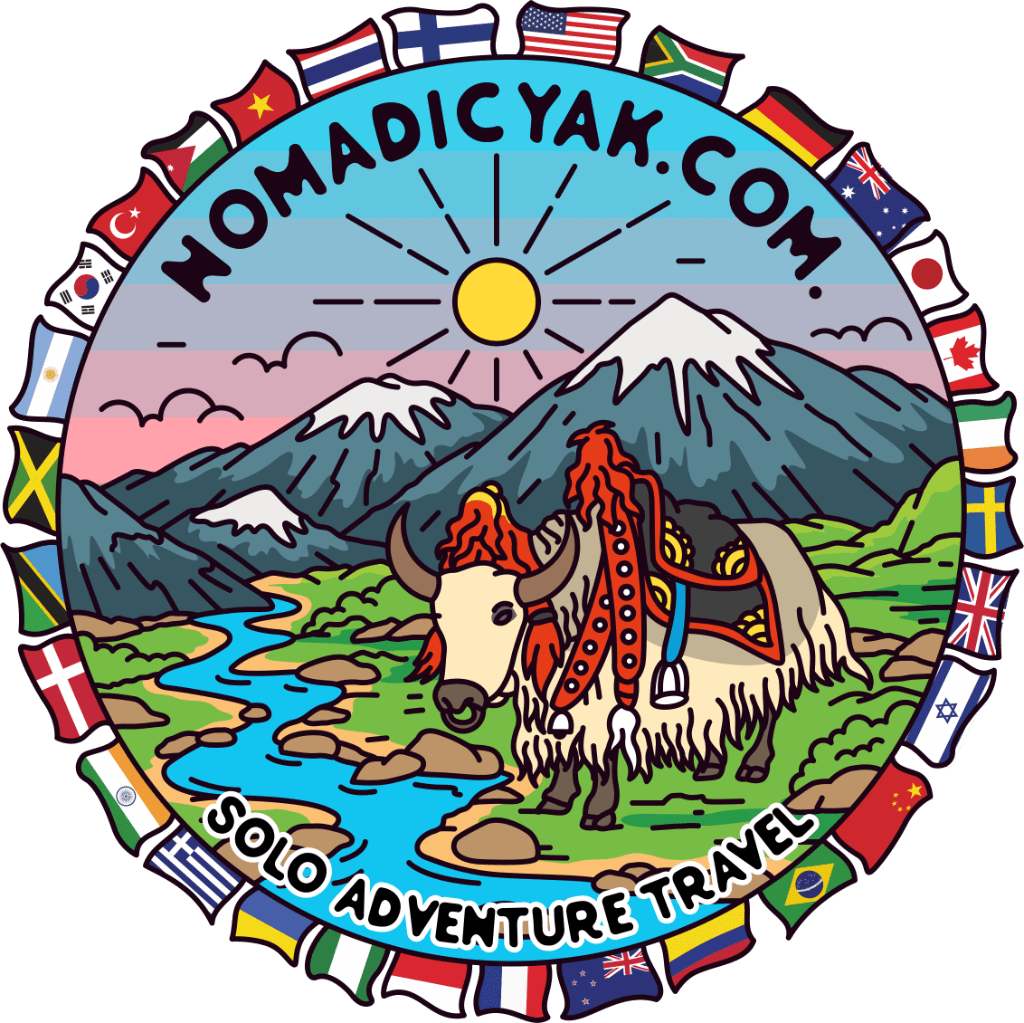
You’ve now got a good idea of how to stay safe while travelling alone – follow the solo travel safety tips above and you’ll be doing better than 99% of other travellers.
But there’s more to solo travel than safety!
Nomadic Yak helps solo travellers to plan journeys that are adventurous and authentic.
Every article is written by me, Harry Dale. I’ve travelled to 40+ countries over the last 5 years – alone.
I’ve shared everything you need to stay safe when travelling alone.
You’ll also find 100s of solo travel tips on how to save money, make more friends, build a social media following and much more.
Plus, you can use my solo travel destination guides to discover international sights and attractions that few other travellers get to witness.

